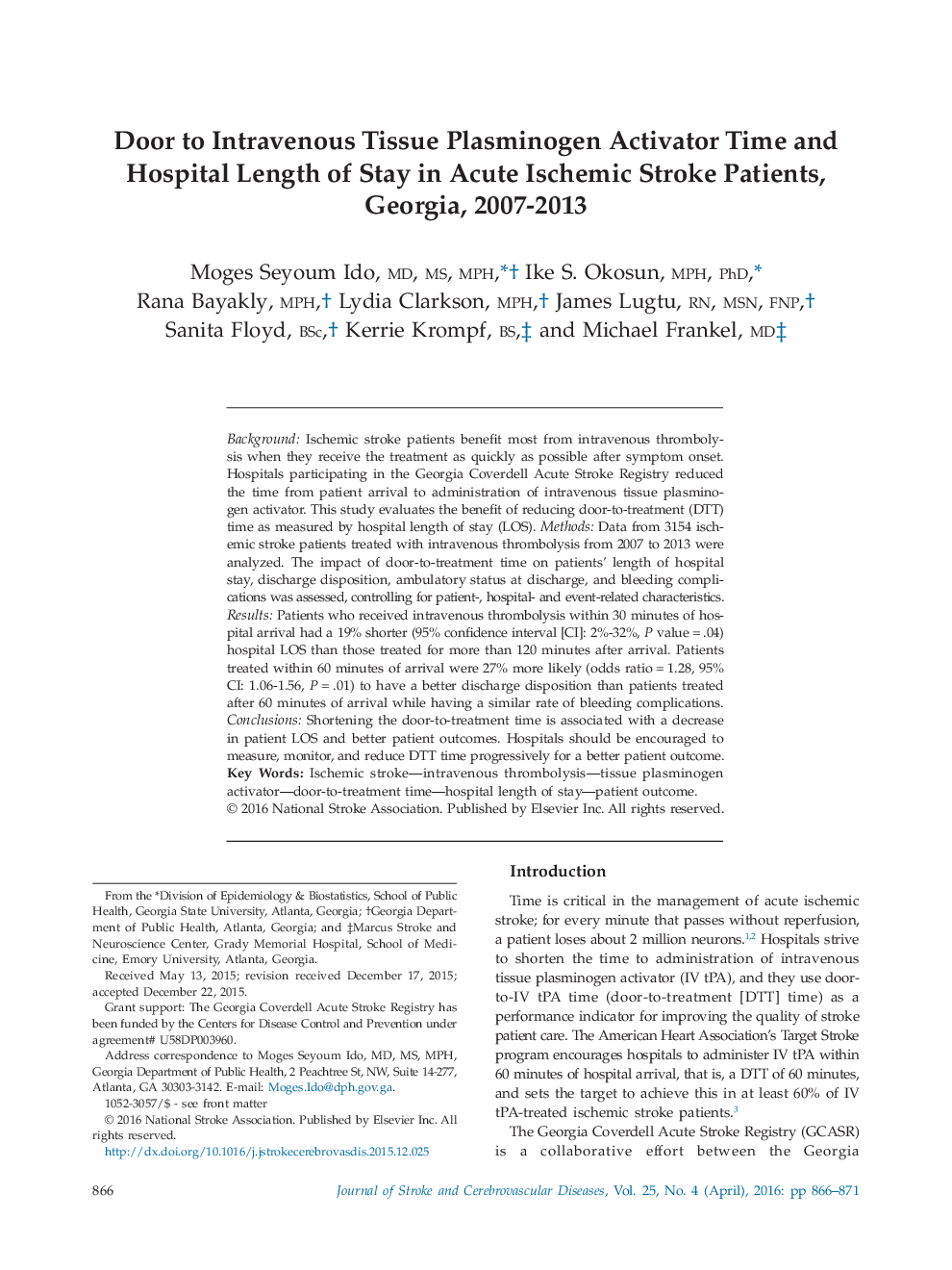| کد مقاله | کد نشریه | سال انتشار | مقاله انگلیسی | نسخه تمام متن |
|---|---|---|---|---|
| 2701619 | 1144457 | 2016 | 6 صفحه PDF | دانلود رایگان |
BackgroundIschemic stroke patients benefit most from intravenous thrombolysis when they receive the treatment as quickly as possible after symptom onset. Hospitals participating in the Georgia Coverdell Acute Stroke Registry reduced the time from patient arrival to administration of intravenous tissue plasminogen activator. This study evaluates the benefit of reducing door-to-treatment (DTT) time as measured by hospital length of stay (LOS).MethodsData from 3154 ischemic stroke patients treated with intravenous thrombolysis from 2007 to 2013 were analyzed. The impact of door-to-treatment time on patients' length of hospital stay, discharge disposition, ambulatory status at discharge, and bleeding complications was assessed, controlling for patient-, hospital- and event-related characteristics.ResultsPatients who received intravenous thrombolysis within 30 minutes of hospital arrival had a 19% shorter (95% confidence interval [CI]: 2%-32%, P value = .04) hospital LOS than those treated for more than 120 minutes after arrival. Patients treated within 60 minutes of arrival were 27% more likely (odds ratio = 1.28, 95% CI: 1.06-1.56, P = .01) to have a better discharge disposition than patients treated after 60 minutes of arrival while having a similar rate of bleeding complications.ConclusionsShortening the door-to-treatment time is associated with a decrease in patient LOS and better patient outcomes. Hospitals should be encouraged to measure, monitor, and reduce DTT time progressively for a better patient outcome.
Journal: Journal of Stroke and Cerebrovascular Diseases - Volume 25, Issue 4, April 2016, Pages 866–871
